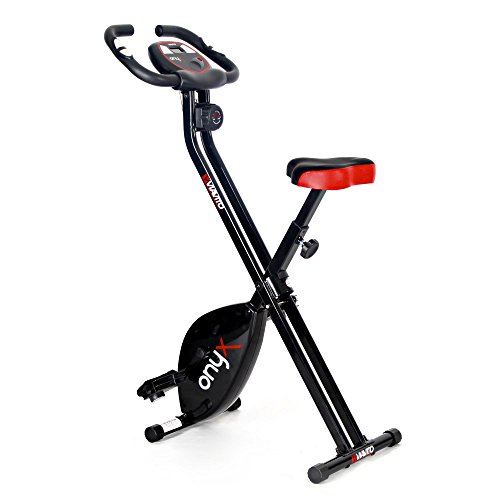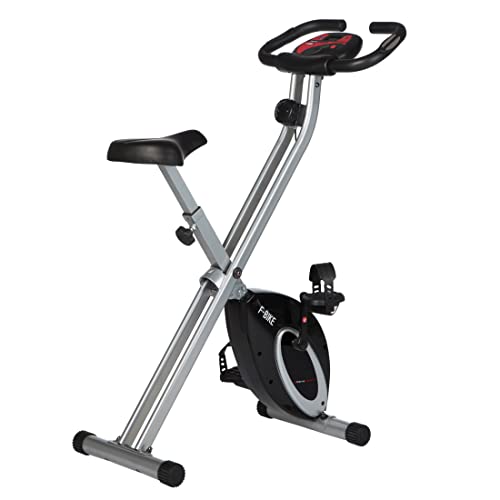Guide To Exercise Cycle For Home: The Intermediate Guide In Exercise C…
페이지 정보
작성자 Preston Longsta… 작성일 25-02-26 21:23 조회 4회 댓글 0건본문
 The Ultimate Guide to Creating an Effective Exercise Cycle for Home
The Ultimate Guide to Creating an Effective Exercise Cycle for HomeIn the fast-paced world these days, preserving a healthy lifestyle has become more crucial than ever. For lots of, the allure of a home fitness center setup is tempting, providing the convenience needed to fit workouts into busy schedules. Amongst the different exercise equipment readily available, a stationary bicycle exercise exercise bike stands apart as a versatile and reliable tool for home fitness. This post explores the benefits of using an great exercise bikes bike at home, how to select the ideal one, and provides an in-depth guide to developing a well-rounded exercise cycle exercise home regimen that can be quickly integrated into day-to-day life.
The Benefits of Home Cycling
Biking in your home offers numerous benefits over conventional health club setups or outside cycling. Here are some essential advantages:
 Convenience: No need to travel to a gym, conserving energy and time.
Convenience: No need to travel to a gym, conserving energy and time.Weather Condition Independence: Exercise despite outside conditions.
Flexibility: Customize your workout to fit your schedule and physical fitness goals.
Low Impact: Gentle on joints, making it suitable for all ages and fitness levels.
Cardiovascular Benefits: Improve heart health and boost endurance.
Mental Health: Reduces tension and increases mood through regular physical activity.
Calorie Burning: Effective for weight loss and management.
Choosing the Right Exercise Bike
Picking the appropriate exercise bike is vital to ensure a comfy and effective exercise experience. Here are some factors to think about:
Type of Bike
Upright Bike: Resembles a traditional roadway bike and uses a more extreme cycle exercise home.
Recumbent Bike: Provides back assistance and is ideal for those with back discomfort or movement issues.
Spin Bike: Designed for high-intensity period training (HIIT) and offers a more vibrant workout.
Resistance Mechanism
Magnetic Resistance: Smooth and peaceful, permitting precise resistance modifications.
Fricton Resistance: Less expensive however can be loud and less accurate.
Air Resistance: Uses a fan to create resistance, providing a natural biking feel.
Adjustability
Seat and Handlebar: Ensure they can be adapted to fit your body comfortably.
Resistance Levels: Look for a bike with a wide variety of resistance settings.
Additional Features
Heart Rate Monitor: Helps track fitness development.
LCD Display: Provides exercise information like speed, distance, and calories burned.
Built-in Workouts: Pre-programmed regimens for range and convenience.
Budget
Cost Range: Determine your budget plan and search for bikes that offer the best static cycle for exercise worth for your cash.
Establishing Your Home Gym
Creating a dedicated space for your exercise bike can substantially boost your exercise experience. Here are some pointers:
Area
Peaceful Area: Choose a space where you can exercise without diversions.
Well-Ventilated: Ensure the area is well-ventilated to remain comfortable throughout extreme sessions.
Flooring
Non-Slip Mats: Use non-slip mats to avoid the bike from moving and to secure the floor.
Cushioning: Consider a cushioned mat to decrease joint impact.
Equipment
Bike Stand: For upright bikes, a stand can stabilize the bike.
Water Bottle Holder: Stay hydrated with a holder within simple reach.
Towel Rack: Keep a towel nearby to clean away sweat.
Home entertainment
Television or Tablet: Mount a screen to see exercises or entertainment throughout your sessions.
Speakers: Connect a pair of speakers to take pleasure in music or podcasts.
Creating a Home Cycling Routine
A well-structured biking routine can assist you attain your fitness goals efficiently. Here's a step-by-step guide to developing an effective home biking exercise:
Warm-Up (5-10 minutes).
Low Resistance: Start with a mild trip to heat up your muscles.
Dynamic Stretches: Include leg swings, hip circles, and arm circles to increase versatility.
Main Workout (20-60 minutes).
Steady-State Cycling: Maintain a moderate speed and resistance for a continual cardio workout.
Interval Training: Alternate in between high-intensity sprints and low-intensity healing durations for a more difficult session.
Hill Climbs: Increase resistance to mimic riding uphill, engaging different muscle groups.
Resistance Training: Use the bike's resistance to build muscle strength, focusing on leg and core muscles.
Cool Down (5-10 minutes).
Low Resistance: Gradually decrease intensity to cool off your heart rate.
Static Stretches: Hold stretches for 15-30 seconds to enhance versatility and decrease muscle soreness.
Frequency and Duration.
Beginners: Aim for 2-3 sessions weekly, each lasting 20-30 minutes.
Intermediate: Increase to 3-4 sessions per week, 30-45 minutes per session.
Advanced: Aim for 4-5 sessions per week, 45-60 minutes per session.
Sample Home Cycling Workouts.
Here are 2 sample workouts to get you started:.
Beginner Steady-State Workout.
Warm-Up: 5 minutes at low resistance.
Main Workout: 20 minutes at moderate resistance.
Cool off: Exercise Cycle for Home 5 minutes at low resistance.
Overall Duration: 30 minutes.
Intermediate Interval Training Workout.
Warm-Up: 10 minutes at low resistance.
Main Workout: 30 minutes alternating 1 minute of high resistance with 2 minutes of low resistance.
Cool Down: 10 minutes at low resistance.
Total Duration: 50 minutes.
FAQs.
Q: Can I use a stationary bicycle if I have knee issues? A: Yes, cycling is a low-impact activity that can be mild on the knees. However, it's crucial to adjust the seat and handlebars to make sure proper posture and positioning to prevent pressure.
Q: How often should I clean my exercise bike? A: It's recommended to clean your stationary bicycle after each use to keep health and avoid rust. Use a damp cloth to clean down the seat, handlebars, and frame. For deeper cleansing, describe the producer's guidelines.
Q: Can I utilize an exercise bike for weight-loss? A: Absolutely! Biking burns calories and can be a reliable part of a weight-loss plan. Combine it with a balanced diet and other kinds of exercise for optimum outcomes.
Q: Do I need unique clothes to utilize a stationary bicycle? A: While not strictly necessary, wearing comfy, moisture-wicking clothing can enhance your exercise experience. Cycling shorts and a moisture-wicking top are good options.
Q: Can I use my exercise bike for strength training? A: Yes, by utilizing higher resistance levels, you can engage your leg and core muscles, building strength and endurance. Incorporate resistance training into your routine for a more detailed exercise.
Conclusion.
A stationary bicycle is a valuable addition to any home health club, providing a variety of take advantage of benefit to low-impact exercises. By choosing the best bike, setting up a comfortable space, and following a structured regimen, you can attain your physical fitness objectives and maintain a healthy way of life from the comfort of your home. Whether you're a beginner or an innovative cyclist, there's a workout strategy that can help you reach your objectives and delight in the lots of benefits of home cycling.
Additional Tips.
Stay Motivated: Set attainable objectives and track your progress.
Mix It Up: Vary your exercises to avoid plateaus and keep things interesting.
Stay Safe: Always warm up and cool off to prevent injuries.
Seek advice from a Professional: If you have any health concerns, speak with a fitness professional or doctor before starting a new exercise routine.
By following these standards, you can develop a rewarding and reliable home biking routine that fits perfectly into your everyday life. Pleased cycling!
- 이전글Car Boot Mobility Scooters Tools To Ease Your Daily Life Car Boot Mobility Scooters Trick Every Individual Should Be Able To
- 다음글How You Can Use A Weekly Buy Telc B1 Exam Certificate Project Can Change Your Life
댓글목록
등록된 댓글이 없습니다.


